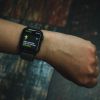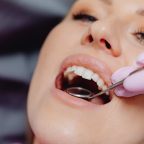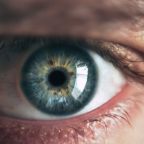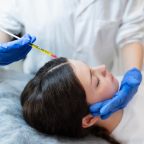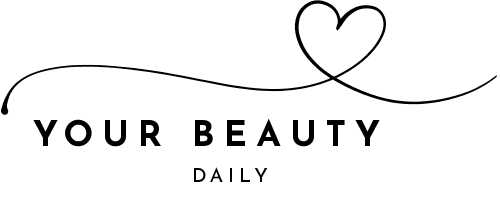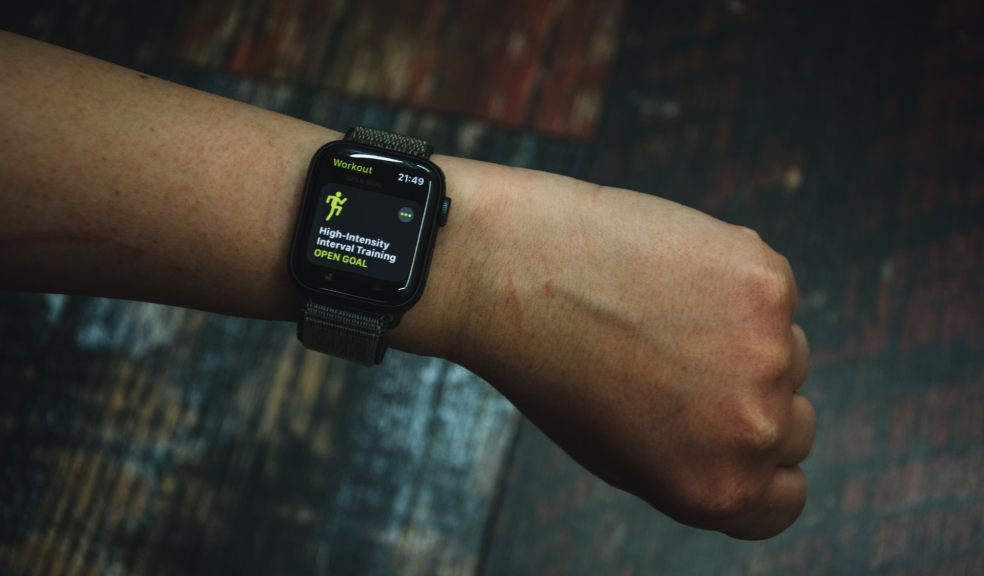
How is the market of wearable IoT devices in healthcare evolving?
Wearable devices are widely used in TeleMedicine, remote patient monitoring, and home healthcare. These devices allow us to read a large number of vital signs. What is the current and future state of the market of wearable IoT devices in healthcare? What kind of devices are used by medical specialists, and what devices are for general users? What benefits do they offer to healthcare? How does custom medical software help to manage data from these devices? We are going to answer all these questions in this article.
The condition of the wearable healthcare devices market
The global healthcare IoT market is projected to reach $176 billion by 2026, which is a phenomenal growth compared to $71 billion in 2020. The segment of wearables used in fitness, wellness, and medicine holds a key position in the market.
Today, the wearable devices market is sustainable and fast-growing. According to a report by Research and Markets, the number of shipments of smart wearables worldwide amounted to 266 million units in 2020 and is projected to reach 776 million units by 2026. Within 2021-2026, the CAGR is likely to be 19.48%.
The fastest growth is expected in the Asia-Pacific region, and such devices as smartwatches will remain the most popular. In the report authors’ opinion, the use of fiber-optical sensors will widely spread and replace the standard sensors in smart textiles and clothes. The device market is going to remain highly competitive, which will undoubtedly stimulate manufacturing enterprises.
A report by Market Study Report mostly agrees with the above data, although it predicts that the industry will grow at a more modest pace - 15.51% from 2020 to 2027 - and the market will grow to $88.7 billion by 2027. According to the report, the top five players in the market include such manufacturers as Fitbit, Apple, Xiaomi Technology, Garmin, and Samsung Electronics. The most advanced regions in terms of using this technology are North America, Europe, APAC, and Latin America. North America will still take the lead in consumption, while APAC will take the lead in market growth. According to the place of attachment, the top five types of devices are wristwear, headwear and eyewear, footwear, neckwear, and bodywear. It is projected that products made of smart fabrics will gain momentum.
Types and attributes of wearable devices for fitness and medicine
Wearables are devices that can be attached to the users’ bodies in order to read their vital signs and physical activity parameters.
As of today, there is a great variety of wearables in medicine and methods of monitoring body functions. Based on the part of the body where wearables are worn, there are ten categories of smart devices - from special helmets and glasses to smart socks and shoes.
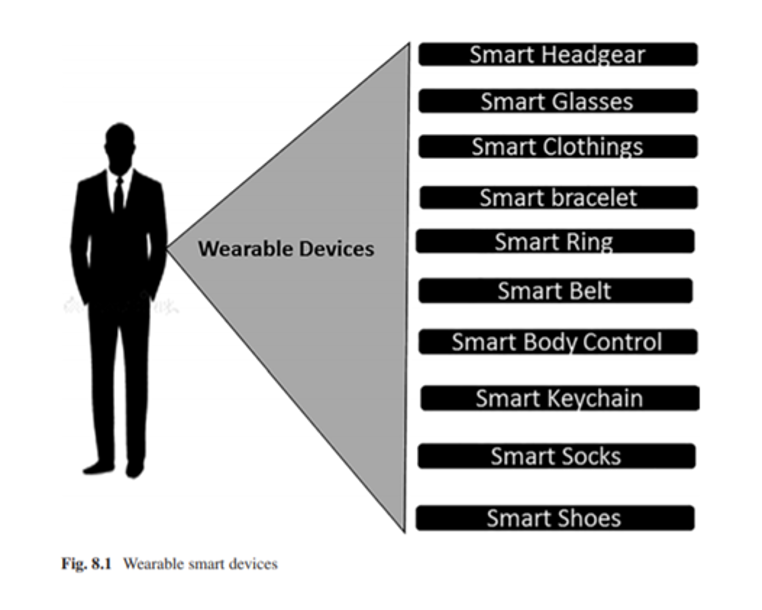
When the classification of devices is determined by the way of obtaining sensor information, IoT wearables are divided into devices based on photoplethysmography (PPG), electrical impedance, and detection of the electrical activity of human organs, i.e. heart (electrocardiography), brain (electroencephalography), etc., as well as biosensors.
PPG devices use light to scan the skin in a non-invasive way, where the beam coming from the device is reflected from oxygenated and deoxygenated red blood cells differently. This method underlies pulse oximetry, used for monitoring oxygen delivery to the body in hospitals. Due to COVID-19, pulse oximetry is widely adopted both in healthcare and in homecare. In 2025, the pulse oximeter market is expected to grow by 70% compared to 2019.
Pulse oximeter data and their further processing by Machine Learning algorithms are used not only as a means for diagnosing the coronavirus infection but also as a triage tool for upper respiratory infections, aka the common cold, and such bacterial infections as tetanus. PPG wearable devices provide users with blood oxygen saturation (SpO2) data, which is the key lung function indicator. Using them, you can additionally read such parameters as pulse rate and volume, blood pressure, respiratory rate, heart rate variability, and hematocrit.
Considering the traditional methods of measuring these indicators, this looks like magic. But in fact, this is about smart technologies multiplied by new well-being indicators and ultra-sensitive sensors. These are technologies like measuring pulse arrival time, i.e. how long it takes for blood to reach a person’s wrist after a heartbeat, to determine their blood pressure.
Examples of the above devices include such popular products as Apple Watch, Fitbit, Garmin, and Huami, as well as specialized medical devices like Everion for your arm, Empatica E4 for your wrist, and ViSi Mobile for your finger. They can differ in functionality, sensor sensitivity, and additional services.
Devices for measuring electrical signals of human organs use miniature skin contact electrodes. They read parameters like heart rate and rhythm and make an ECG recording. Based on the ECG, the devices generate data on the user's respiratory rate. Sleep duration can be determined by analyzing heart rate variability together with the data from motion sensors. These devices are mostly placed on a user’s chest and back, sometimes on their legs or arms. Examples include devices such as Sensium, Equivital, Lifetouch, Zephyr, and BioStamp, which are certified in the European and American markets.
Finally, biosensor devices include various models for measuring body fluids (e.g. blood, saliva, sweat) and can also be applied in an invasive manner. They are mostly used for reading parameters like a glucose level, performing rapid blood coagulation tests (Prothrombin Time/International Normalized Ratio), and determining the concentration of antibiotics and antibodies in a patient’s body.
Devices for continuous glucose monitoring are most widely represented in this segment. Dexcom G6 CGM, Freestyle Libre, Medtronic Guardian, CoaguSense, etc. are examples of such devices in the European and American markets.
Along with that, medicine actively uses the following types of sensors:
- Action monitoring sensors in wearables, attached right to the body or clothes and reacting to a certain type of actions of their wearers, as well as collecting information about vital biomedical parameters;
- Mobility monitoring sensors based on GPS, allowing those who wear them to monitor their physical activity and location.
Data from these devices, together with data from other wearables, are used for monitoring patients’ sleep efficiency and physical activity, which is important for senior patients, especially those with mental health problems.
Benefits of wearable devices in healthcare
Devices equipped with sensitive sensors and communication channels are a great source of information about their user’s key vital signs. There are areas where the use of such devices offers clear benefits to clinical and remote healthcare.
Mobile IoT wearables make it possible to remotely monitor the well-being and physical activity of patients who are in observation, quarantine, or undergoing post-treatment follow-up, which significantly extends key features of TeleMedicine. This becomes especially important for tracing possible carriers of infectious diseases, including such high-impact diseases as COVID-19, swine flu, or Ebola, minimizing the risk of infection for clinic staff and allowing for the remote monitoring of patients’ vital signs to determine their need for hospitalization.
The widespread use of wearables for tracking specific symptoms helps with early detection of disease cases, especially in environments with limited resources and a lack of hospitals, as well as enhances real-time public health surveillance. For example, the CovIdentify project implemented by Duke University demonstrates the use of technology for the early detection of coronavirus disease. Data on critical health problems transmitted by the devices can be obtained and interpreted in information processing centers, which contributes to making recommendations on patients’ hospitalization and treatment, regardless of the region where they are observed.
Data from wearables that patients are using at clinics is transferred to AI-based clinical decision support systems. These systems help staff effectively track changes in patient conditions by recording their early symptoms and warn the doctors in advance about the need to change treatment plans. Also, the information from device sensors helps healthcare workers track treatment effectiveness, possible allergic reactions and overdoses, and the excess concentration of antibiotics or other chemical or radioactive elements in the patient's body.

Finally, wearable readings can be used to create predictive models that help to forecast new cases, foci, and the potential mortality rate. A series of studies conducted in this area were aimed at identifying the early symptoms of COVID-19 and making projections for its spread based on statistical data processing. To effectively use this tool, the maximum level of medical information exchange and EHR coverage of the population is required, which was manifested in the leading position of Israel in combating COVID-19.
The future of wearable devices in healthcare
Types of these devices and areas of their application are very diverse. Scientists predict that this diversity will extend, leading to the emergence of new wearables. The algorithms of connected neural networks will analyze data from sensors, and the automatically made decisions will reduce the impact of environmental, behavioral, and other factors (diet, travel, alcohol, stress, etc.) on people's health.
Determining the physiological state of a human body based on biomarkers significantly improves the diagnostic and predictive capabilities of medicine. This includes multimodality of the systems when different transducers are in one device, multiplex measurements when data are evaluated simultaneously, local data processing based on the reduction of the price of low-power silicon electronics, as well as increases in computational power. IT solutions monitor the daily lives of patients and don’t require access to large datasets for training.
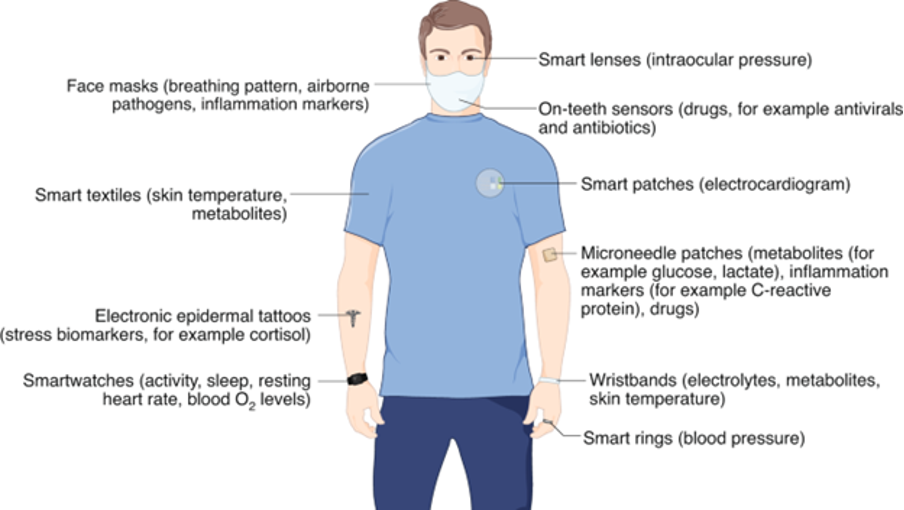
Nowadays, wearables used for medical purposes are reliable, small, and convenient enough to be integrated into our everyday life. Experts recommend companies developing specialized health solutions consider their advanced functionality. The constant wearing of such devices by people will help healthcare workers collect even more data and better train AI/ML algorithms.
Conclusion
The use of wearables in healthcare is a steady and progressing trend. This area remains highly competitive, which stimulates the advancement of technologies and enhanced functionality and convenience of the devices. Thanks to the variety of measurement methods and the ability to place devices on the patients’ bodies, clinics and research centers collect a significant amount of data on the vital signs and physical activity of users for further processing and use.
Thus, there are the following primary areas of use of wearable devices in healthcare:
- remote monitoring and TeleMedicine,
- early diagnosis as part of public health surveillance,
- treatment plan adjustments and clinical patient monitoring,
- predictive models and compliance with sanitary and epidemiological policies.
The role of high-quality software for ensuring the flawless work of medical IoT devices, integrating devices, seamlessly transferring data, and implementing cloud technologies for the secure storage of medical information cannot be overstated. Another promising trend is configuring neural network algorithms for analyzing and processing medical information. Andersen is a healthcare software development company with expertise in delivering quality solutions for any of these areas.









